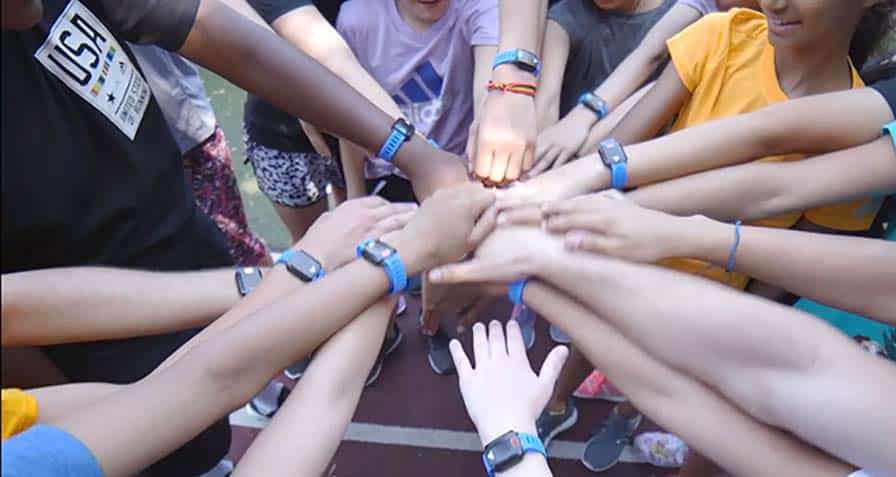The end of the school year is a popular time to request funding to purchase technology such as the IHT ZONE wrist heart rate monitor and IHT Spirit Assessments software that will benefit students in the coming school year. IHT customers have experienced great success accessing unspent budgets, technology funding, and federal funding for their purchases.
Teachers and administrators have worked together to put any unspent district funding to good use. In some cases, this collaboration has led to increased funding for certain departments in the next budget cycle.
Accessing Unspent Budgets
Departmental budgets are often “use it or lose it” budgets. Any allocated funding that remains unspent seldom rolls over into the next year’s budget, and administrators often reduce future budgets by the amount that went unspent in the current year. Surpluses could exist in different areas if a school building didn’t open for the entire year creating unspent utility budgets, for example or sporting events had to be canceled.
That proved the case at Leland and Gray Union High School (Vt.). The school canceled its sporting events during COVID, creating a surplus in Athletic Director Marty Testo’s budget. When he heard PE teacher Tammy Claussen discussing her need to purchase IHT ZONE heart rate monitors to create student accountability in her online PE program, Testo stepped forward.
“I heard her talking about it in a faculty meeting and I agreed,” Testo said. “Teaching PE remotely, it’s difficult to see the evidence that we need to see. This is great because it gives a way to find that proof and get kids accustomed to tracking their own success.”
Testo’s quick action enabled the district’s students to benefit from the technology before the money could be reclassified. The technology, Claussen said, will reinforce key lessons for students.
“I always keep in mind the end goal,” she said. “I want this to be encouraging, motivating and supportive and I want them to have a true reflection of what they are doing. The kids are still learning what moderate and vigorous physical activity looks like. The kids need to understand what effort feels like.”
 Collaborative Funding
Collaborative Funding
One area schools often find surpluses is the technology budget. These can exist when districts don’t purchase as many new devices as originally planned or don’t have to repair as many laptops, iPads, Chromebooks, or other devices essential to student learning as originally planned. Other academic departments could have surpluses as well.
“I talk with other teacher leaders who control budgets that might be a little more robust than mine,” one PE leader said. “And if they have funds they’re not going to need or if they’ve already taken care of all of their needs and still have, say, $1,000 left, well, that’s a lot of money for me.”
Identify your campus or district technology director and ask if funding is still available. IHT’s heart rate monitors have proven to be engaging and motivating devices that help students learn to become their healthiest – and most academically prepared – selves.
Administrators often appreciate teachers who work together to spend money in ways that best benefit students. Seldom, one said, is a request to transfer money that won’t be spent to a department that has a definite use that will benefit students refused.
“When teachers who control separate budget lines come to them and say ‘we’d like to do this,’ they are amenable,” he said. “It just takes everyone working together. I’ve been fortunate that I’ve been able to work with other leaders who have sent me money out of their budget.”
Federal Funding
 Since the Spring of 2020, the federal government has provided public schools with more than $200 billion, or approximately $4,000 per student, to help address the impact of COVID-19. The most recent allocations through the CARES (Coronavirus Aid, Relief and Economic Security) Act and the new ARP (American Rescue Plan), include more than $130 billion of that total.
Since the Spring of 2020, the federal government has provided public schools with more than $200 billion, or approximately $4,000 per student, to help address the impact of COVID-19. The most recent allocations through the CARES (Coronavirus Aid, Relief and Economic Security) Act and the new ARP (American Rescue Plan), include more than $130 billion of that total.
In California, a PE leader found the path to CARES Act funding easier than expected. The PE leader learned the district had received its initial CARES allocation from the state and had begun looking for ways to spend it. At a staff meeting, she stated her interest in using the Learning Loss Mitigation Funds to provide expand her inventory of IHT ZONE heart rate monitors. She followed up with a spreadsheet detailing the proposal and the expected benefits.
“That was it,” she said. “They had funding that needed to be used by Dec. 31. Bada-bing, bada-boom.”
The teacher said once district officials saw the benefits the students received from wearing the IHT ZONE monitors in their on-campus PE classes, the discussion proved easy around the proposal to add more for at-home use once the campus closed.
“After we initially ordered the IHT monitors and saw a difference in our PE class with improved motivation, this conversation was easy,” she said. “When kids are wearing the heart rate monitors, they know what they need to do.”
Each state education agency has published guidelines for how local school districts can use the money. In accordance with federal funding guidelines, the CARES and ARP funding can be used for programs that:
- implement strategies to meet social, emotional, mental health and academic needs of students hit hardest by the pandemic;
- to purchase education technology; and
- addressing lost learning time.
States may also have requirements for the funding. A California funding coordinator encouraged teachers and administrators to study the state’s guidelines for the funding so they can create a proposal that has the best chance of succeeding. It also helps to identify the district’s federal funding director and ask how to apply for this funding.
Learn More about the Spirit heart rate monitor.


